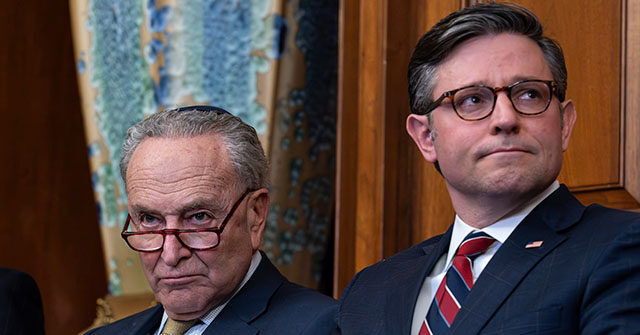Speaker Mike Johnson (R-LA) is pushing for a continuing resolution (CR) to maintain the spending levels established earlier this year, despite substantial pushback from within his own party. The CR is set for a House vote on a Friday evening, mere hours before a government shutdown is anticipated at midnight. While the Senate’s approval is still required, it is expected to support the legislation since similar spending levels were previously passed with overwhelming backing from Democrats in March. The underlying question surrounding the CR has led to scrutiny and curiosity, as highlighted by Elon Musk’s inquiry on social media regarding whether the bill is predominantly a Republican or Democrat initiative.
This CR marks Johnson’s second attempt to extend existing spending levels. In September, another CR was approved, allowing the spending deadlines to be pushed into the post-election “lame duck” period, much to the satisfaction of Senate Majority Leader Chuck Schumer (D-NY). Critics, such as Breitbart News, have reported that this maneuver provides Schumer an opportunity to pass a spending bill before Republicans potentially regain more power in Congress come January. The framing of the situation has fueled healthy debates on party allegiances and the implications of these legislative maneuvers for future governance.
Johnson faced considerable opposition from a significant faction of House Republicans when he advanced the previous $1.2 trillion spending package. The dissenting voices from his party numbered 112, indicating a fracture within Republican ranks regarding fiscal strategy and party discipline. Johnson’s decision to push the bill through the House also came with procedural violations, as it was unveiled to lawmakers less than 36 hours prior to the vote, disrupting the customary review process. When such a huge budget bill receives more Democratic support than Republican, it raises questions about the future of Johnson’s speakership and his ability to navigate party dynamics effectively.
The new CR being considered will extend current spending levels until March, supplementing it with a one-year extension of the agricultural bill and an additional $100 billion for farm and disaster assistance. However, the measure avoids a debt limit increase, a factor that was a point of contention during discussions, particularly requested by former President Donald Trump. While an informal agreement includes plans to address the debt limit in a reconciliation bill next year, there are increasing doubts about the viability of such a measure, reflecting the tense atmosphere in Congress where unity on fiscal strategies appears elusive.
The legislative process will involve considering the CR under suspended rules, necessitating a two-thirds majority for passage in the House. This scenario anticipates that Democrats will form a significant portion of the voting bloc supporting the bill, further complicating the dynamics within the Republican party. The uncertainty surrounding how many GOP members will back Johnson’s current effort exacerbates the scenario, as he’s once again caught between party loyalty and practical governance, with broader implications for his leadership stance.
As Johnson pushes forward, speculation looms over whether the Senate will accept the CR as is or take this opportunity to negotiate additional provisions that could alter the final bill significantly. Schumer’s position may provide leverage for further amendments, dictating the final essence of the funding package. The developments are keenly monitored as they highlight an essential tug-of-war over budget priorities and party control, all while the deadline for a government shutdown draws near. The outcomes of this legislative battle will not only affect immediate fiscal landscapes but also set important precedents for future bipartisan negotiations in an increasingly polarized political climate.

